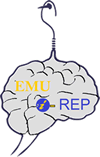JavaScript is disabled for your browser. Some features of this site may not work without it.
| dc.contributor.advisor | Yüksel, İnci (Tez Danışmanı) | |
| dc.contributor.author | Er, Göktuğ | |
| dc.date.accessioned | 2025-06-10T11:35:28Z | |
| dc.date.available | 2025-06-10T11:35:28Z | |
| dc.date.issued | 2023-05 | |
| dc.date.submitted | 2023-05 | |
| dc.identifier.citation | Er, Göktuğ. (2023).Kronik Mekanik Bel Ağrısında Konnektif Doku Masajı ve Klasik Masaj Yöntemlerinin Ağrı, Esneklik, Yeti Yitimi, Yaşam Kalitesi ve Otonomik Yanıtlar Üzerindeki Etkilerinin Karşılaştırılması: Randomize Çalışma. Tez (Doktora), Doğu Akdeniz Üniversitesi, Lisansüstü Eğitim, Öğretim ve Araştırma Enstitüsü, Fizyoterapi ve Rehabilitasyon Bölümü, Gazimağusa: Kuzey Kıbrıs | en_US |
| dc.identifier.uri | http://hdl.handle.net/11129/6355 | |
| dc.description | Fizyoterapi ve Rehabilitasyon - Doktora Tezi. Lisansüstü Eğitim, Öğretim ve Araştırma Enstitüsü. Tez (Doktora) - Doğu Akdeniz Üniversitesi, Sağlık Bilimleri Fakültesi, Fizyoterapi ve Rehabilitasyon Bölümü, 2023. Tez Danışmanı: Prof. Dr. İnci Yüksel. | en_US |
| dc.description.abstract | ÖZ: Kronik mekanik bel ağrısı (KMBA), lumbar bölgede belirli bir neden olmaksızın en az altı hafta süren gerginlik, ağrı veya sertlik olmasıdır. Bu çalışmanın amacı KMBA kliniğinde kullanılan sıcak paket ve egzersiz tedavilerine ek olarak klasik masaj (KM) ile konnektif doku masajı (KDM) uygulamalarını karşılaştırıp en etkili manuel tedavi yöntemini belirlemekti. Çalışmada 70 KMBA’lı birey, KDM (n=35) ve KM (n=35) gruplarına randomize olarak ayrıldı. Gruplara haftada beş gün olmak üzere 20 seans sıcak paket ve egzersize ek olarak KDM veya KM uygulandı. Otonomik yanıtların değerlendirmesinde kalp hızı, kan basıncı, oksijen saturasyonu, lokal ve periferik deri temperatür ölçümleri kullanılırken, ağrı şiddeti için Vizüel Analog Skala (VAS), yeti yitimi için Oswestry Yeti Yitimi Anketi, esneklik için lumbar lateral fleksiyon ile otur-uzan testleri, yaşam kalitesi için Kısa Form-36 (KF-36), uyku kalitesi için Pittsburgh Uyku Kalitesi İndeksi (PUKİ) kullanıldı. Değerlendirmeler çalışmaya başlamadan önce, tedaviler tamamlandıktan bir gün sonra ve takip için altı hafta sonra yapıldı. Gruplar karşılaştırıldığında 10. tedavi sonrasında VAS ile ölçülen ağrı şiddetinde KM grubunda daha fazla iyileşme (p=0,049) ve altı haftalık takip değerlendirmesinde KF-36’nın emosyonel iyilik hali parametresinde KDM grubunda daha fazla gelişme (p=0,028) görüldü. Diğer ölçüm zamanlarında ağrı şiddeti ve KF36’da fark bulunmadı (p>0,05). Otonomik yanıtlar, yeti yitimi, esneklik ve uyku kalitesi ölçümlerinde KDM ve KM grupları arasında tüm ölçüm zamanlarında fark bulunmadı (p>0,05). Sonuç olarak sıcak paket ve egzersize ek KM veya KDM uygulamalarının otonomik yanıtlar haricinde ağrı, yeti yitimi, esneklik, yaşam kalitesi ve uyku kalitesi üzerinde olumlu etkileri olduğu belirlendi. | en_US |
| dc.description.abstract | Chronic mechanical low back pain (CMLBP) is caused by tension, pain, or stiffness in the lumbar region that lasts for at least six weeks without a specific cause. The aim of this study was to compare classical massage (CM) and connective tissue massage (CTM) in addition to the hotpack and exercise used in the CMLBP clinic and to determine the most effective manual treatment method. Seventy individuals with CMLBP randomly divided into the CTM (n=35) and CM (n=35) groups. In addition to 20 sessions of hot pack and exercise five days a week, CTM or CM was applied to the groups. While heart rate, blood pressure, oxygen saturation, and local and peripheral skin temperature measurements were used in the evaluation of autonomic responses, the visual analog scale (VAS) was used for pain severity, the Oswestry Disability Index (ODI) for disability, lumbar lateral flexion, and sit-and-reach tests for flexibility, the Short Form-36 (SF-36) was used for quality of life, and the Pittsburgh Sleep Quality Index (PSQI) was used to assess sleep quality. Assessments were made before the study, one day after the treatments were completed, and six weeks later for follow-up. When the groups were compared, there was a greater improvement in pain severity measured by VAS after the 10th treatment in the CM group (p=0.049) and more improvement in the emotional well-being parameter of SF-36 in the 6-week follow-up evaluation in the CTM group (p=0.028). There were no differences in pain intensity and SF-36 at other measurement times (p>0.05). There were no differences between CTM and CM groups at all measurement times in autonomic responses, disability, flexibility and sleep quality measurements (p>0.05). As a result, it was determined that CM or CTM applications in addition to hot pack and exercise had positive effects on pain, disability, flexibility, quality of life and sleep quality, except for autonomic responses. | en_US |
| dc.language.iso | tur | en_US |
| dc.publisher | Eastern Mediterranean University (EMU) - Doğu Akdeniz Üniversitesi (DAÜ) | en_US |
| dc.rights | info:eu-repo/semantics/openAccess | en_US |
| dc.subject | Fizyoterapi ve Rehabilitasyon Bölümü | en_US |
| dc.subject | Bel Ağrısı--Tedavi | en_US |
| dc.subject | Otonom Sinir Sistemi; Masaj; Omurga; Kas-İskelet Manipülasyonları | en_US |
| dc.title | Kronik Mekanik Bel Ağrısında Konnektif Doku Masajı ve Klasik Masaj Yöntemlerinin Ağrı, Esneklik, Yeti Yitimi, Yaşam Kalitesi ve Otonomik Yanıtlar Üzerindeki Etkilerinin Karşılaştırılması: Randomize Çalışma | en_US |
| dc.type | doctoralThesis | en_US |
| dc.contributor.department | Doğu Akdeniz Üniversitesi, Sağlık Bilimleri Fakültesi, Fizyoterapi ve Rehabilitasyon Bölümü | en_US |









